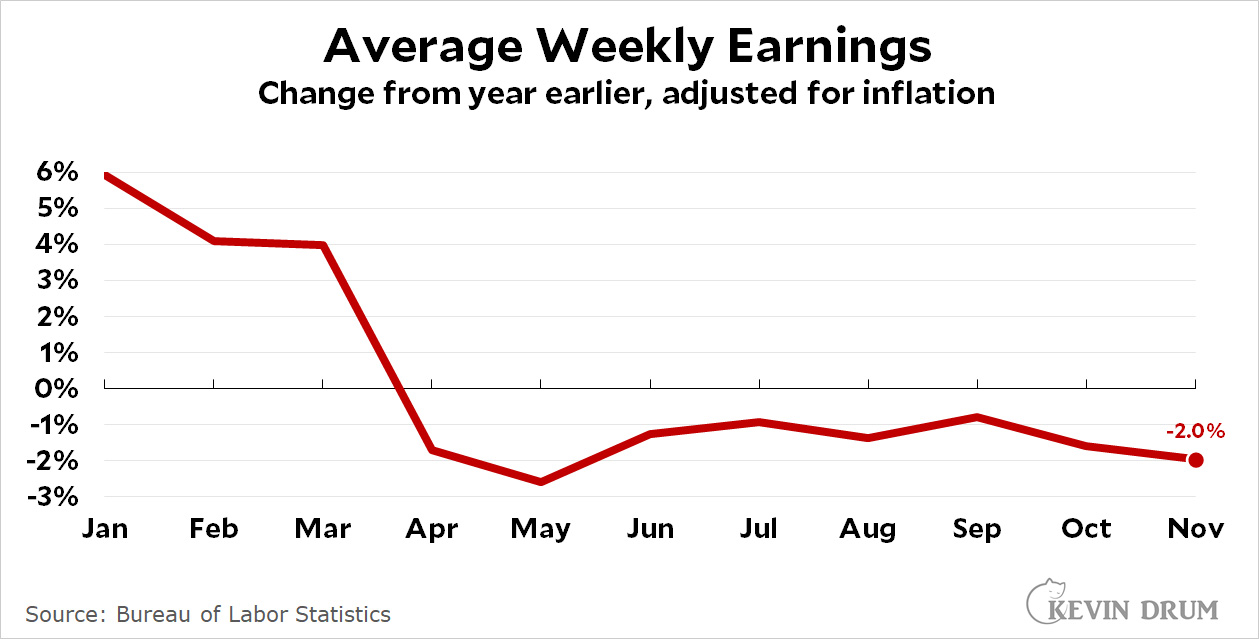When inflation rises, there's always fear of a wage-price spiral. That is, wages go up more than prices in order to give workers a genuine pay increase, then prices have to go up to make up for this, rinse and repeat. But that's not happening this time around:
 Average wages went negative in April and have stayed there throughout the rest of the year. In the most current month, earnings were down 2% compared to last year.
Average wages went negative in April and have stayed there throughout the rest of the year. In the most current month, earnings were down 2% compared to last year.
This could change, but for now there's no evidence of a wage-price spiral. Prices are going up, but that's all.

My company just did an unexpected pay boost ahead of our usual annual raises. But we’re in an unusually competitive industry and been having retention and recruitment challenges. It will be interesting to see what the annual annual base adjustment is- it’s been 3% for several years.
S/b “average annual”
Two points:
1. Mean versus median. It is possible a relatively small number of end wage earners skew this data. So solid inferences are hard to make based on averages.
2. Many companies had significant loses during peak Covid. Thus, aggressive profit maximization is rational and one can assume that markets, over time, will adjust for this rent seeking.
ugh...can't end
1. small number of HIGH end
Is this adjusted for workforce composition? In April 2020, many service workers had no wages, so the average of those still employed (more likely to be higher wage workers) went up. Now the low wage service workers are back and dragging down the average.
Given that we see a massive decline in April/May 2021, this appears to be what the graph above is showing us.
Likely we are in a situation where everyone's earnings are up y/y, but aggregate numbers are down.
No, the April/May decline isn't just that - it's also when bits of inflation did start to kick in. If it were really about lower waged workers coming back to the workforce, why is Jan/Feb/March 2021 compared to Jan/Feb/March 2020 so high?
Wages have gone up compared to pre pandemic. Also, I bet there are still fewer service workers compared to February 2020.
There was a drop in April, and it has been a consistent level since May. You would have to explain why there was a big drop in earnings in April, but not a drop since then as inflation accelerated.
Or you could wonder if something changed related to employment between March and April 2020. Any idea what happened in March 2020?
This is a denominator issue, not a numerator issue.
https://fred.stlouisfed.org/graph/?g=JUay
Average wages went up about 5% from March to April 2020. That is 100% due to compositional effects (restaurant workers didn't have income). This throws off the 12 month comparison number.